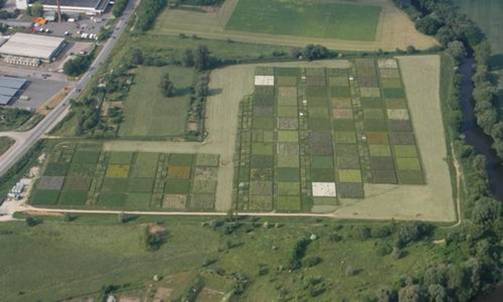The Jena Experiment
Diversity and functions of arbuscular mycorrhizal and soil fungi with oxidative potential in grasslands with different levels of plant diversity

Context: The role of biodiversity for element cycling and trophic interactions: An experimental approach in a grassland community
The Jena Experiment aims to study the interactions between plant diversity and ecosystem processes, focusing on element cycling and trophic interactions. Artifical plant communities are established from a species pool of 60 species from Central European Arrhenatherum grasslands, divided into four functional groups. The main experiment is carried out on 90 large 20 x 20 m plots and plant species richness ranges from 1 to 60 species. To assess within-mixture variability, all species mixtures from 1-60 species and the control treatments of the main experiment are identically replicated on 90 small 3.5 x 3.5 m plots. Monocultures of all 60 plant species are grown in 120 replicated monocultures on small plots to test for overyielding in mixtures, and to provide a basis for measuring species-specific traits.

The experimental communities serve as basis to study ecosystem fluxes of carbon and nutrients. In addition, special attention is given to interactions between species both within the primary producer level and between the different trophic levels, regarding as well above-ground as below-ground process.
Our studies are focused on one key group in below-ground processes - the fungi. Host range of arbuscular mycorrhizal fungi (AMF) will be studied in monoculture plots. In poly-cultures with different biodiversity levels, the interdependence between species richness of plants and of AMF will be further investigated. A labelling experiment will serve to specify more precisely the role played by AMF mycelial networks for resource partitioning between plant species and plant functional groups.
Additionally, in plots with different plant species combinations, the diversity and expression profiles of fungal genes encoding laccases, oxidative exoenzymes common in fungi, will be related to the measured nitrogen mineralization and organic matter accumulation in the soil.
For further questions, please contact:
Dr. Stephan König, francois.buscot@ufz.de
